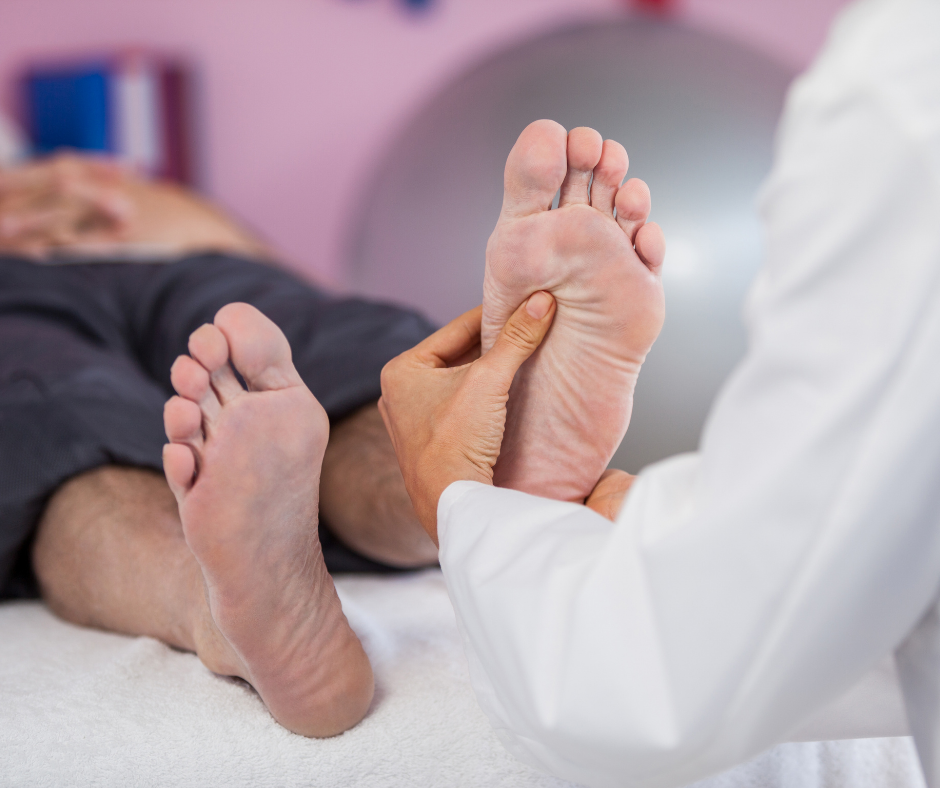More than one quarter (25 percentage) of American senior citizens suffer from diabetes, a chronic illness that causes a variety of complication. One alarming statistic reveals that between 10 and 15 percent of people with diabetes are at risk of developing the terrifying specter of leg and foot ulcers. These seemingly minor injuries, if left unattended, may get worse until diabetic foot amputations become an unavoidable reality. Foot ulcers account to more than 80 percent of all amputations.
Diabetes management is a complex issue that requires a holistic approach, which goes beyond glucose control. This is why daily foot care is an essential component in preventing the threat of diabetes-related complications.

Understanding the Landscape
It is a challenge to navigate the complex realm of diabetes complications. The high rate of leg and foot ulcers in diabetic patients emphasizes the need for proactive medical care. Since the data paints a stark image the reality is that fostering a deeper knowledge of the complexities is crucial in fighting against leg and foot ulcers.
The Amputation Conundrum
The possibility of an amputation is always on the horizon for diabetics. It’s a fact that goes beyond the mere numbers, affecting people at a personal level. It’s an extended journey from a minor ailment to the possibility of amputation due to diabetes.
Daily foot care: A shield from Amputation
The foundation of diabetes amputation prevention lies in daily foot care. This isn’t only about keeping your feet clean; it’s an extremely thorough method for identifying and solving potential issues prior to them escalating. Each step of the routine every day is crucial to combat Amputations due to diabetes.
Vascular Specialists: What is Their Role
Vascular specialists do not manage diabetes in a direct manner, however their expertise is vital in helping to reduce the risks. To ease pain in the legs, and aid in healing of wounds, establishing optimum blood flow is a key component of treatment. With this approach of collaboration The goal is simple to prevent diabetes-related amputations through alleviating the effects of this condition.
Amputation Prevention Strategies
To make it through the dangers of amputation due to diabetes, you need a combination alertness, vigilance, and skilled intervention. If you’re a person who’s struggling with diabetes, taking a proactive attitude is crucial. Regular check-ups with healthcare providers such as vascular specialists aid in early detection and treatment.
Understanding the Triggers: Leg Ulcers and Beyond
Leg ulcers, typically the precursors to more serious complications, need attention and knowledge. It is vital to understand the causes that result in leg ulcers. Finding the cause for the ulcer, whether it’s poor circulation, neuropathy or any combination, enables customized and targeted care.
Education as empowerment
Essential is educating those suffering from diabetes on the risk involved and preventative measures. In the healthcare environment and in the community as a whole, educational programs can bridge the gap between awareness to the action. Knowing the possible negative consequences of injuries that seem to be minor could prompt immediate responses that can prevent diabetic foot amputation.
Private Battles as well as Collective Triumphs
It’s not just an individual battle, but an enthralling group effort to combat diabetic-related amputations. Joining support groups with your doctor or in the local community is a good opportunity to share your experiences as well as gain insight and master ways to cope. The risk of amputation can be physically draining. A sense of community is a fantastic way to feel secure and at peace.
Conclusion: The battle against ulcers, diabetes, and threat of amputation are multi-faceted. Regular foot care is the initial step to protect yourself. Vascular specialists’ experience can be an invaluable benefit to reducing the severity of complications. Individuals with diabetes who are cognizant, adopt preventive measures, as well in fostering a system of support, will be able to traverse the treacherous terrain with hope and resilience and reduce the risk of amputation.